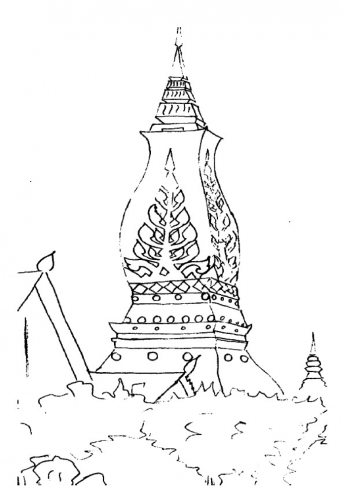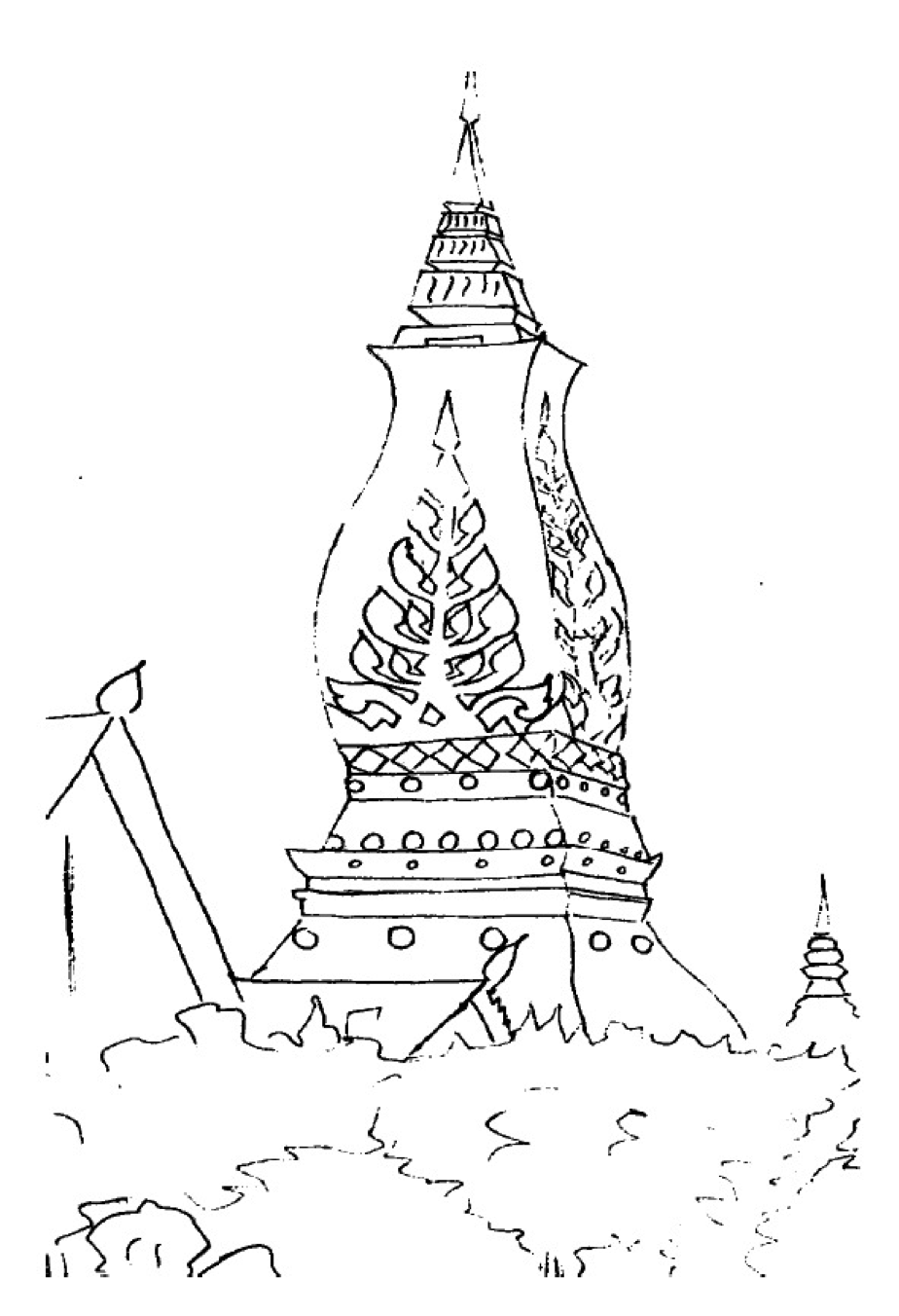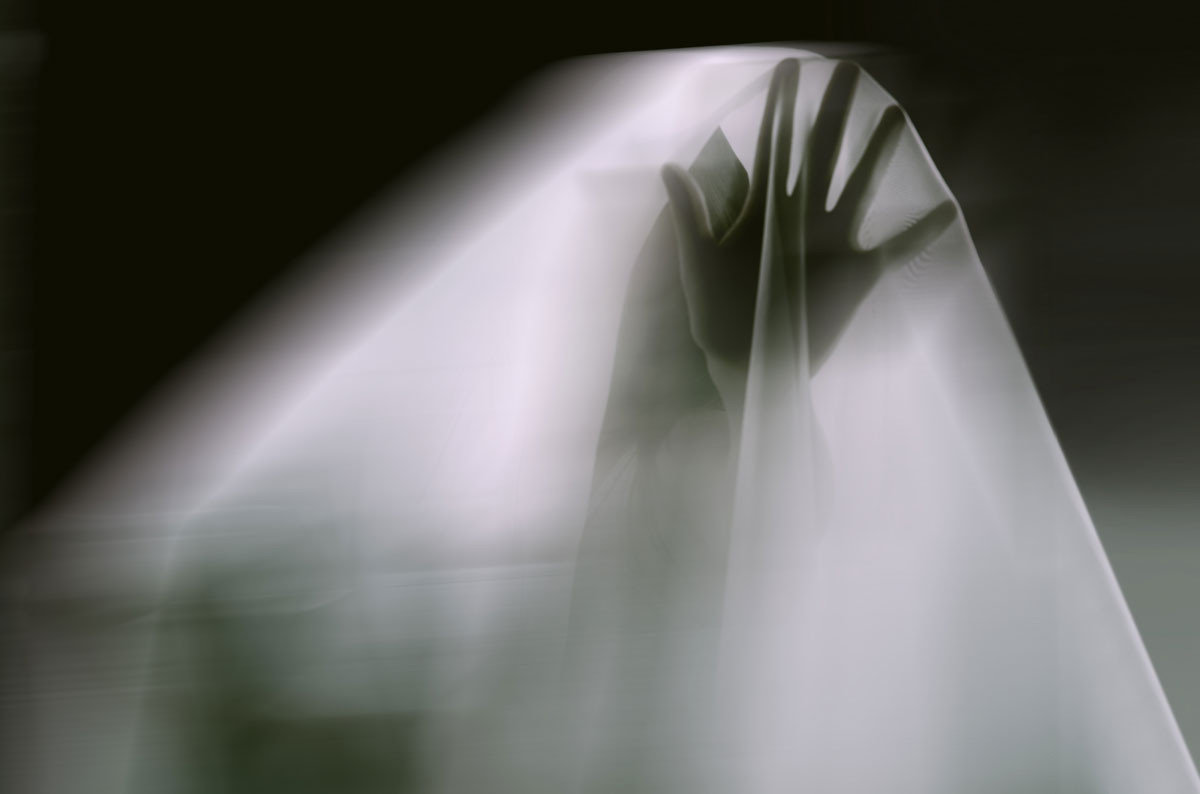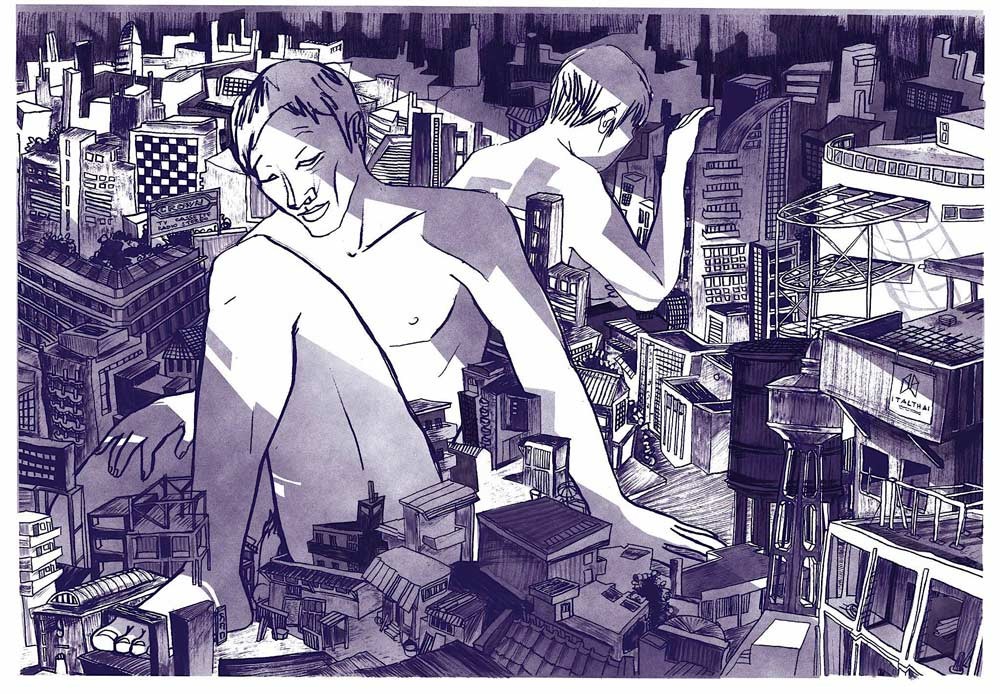This week The Isaan Record takes you first to Nakhon Phanom in the corner of the Northeast and back west to Sakon Nakhon. Today’s tales recount the stories behind some of the region’s most important temples and lakes.
Story 11: The Temple of Respect
THE TEMPLE OF TAT PHANOM IS THE MOST IMPORTANT TEMPLE IN THE NORTHEAST, and it is one of the most important temples in Thailand. Much of the story of this temple is only legend, and no one knows how old it is.
A
Hundreds of years ago, before there were any great countries, each city was its own nation. Sometimes, one city would have a powerful king, and it would rule over three or four other cities. Sometimes none of the cities would be able to rule over any other. Often groups of cities would work together. They would help protect each other from enemies, and they would sell things to each other. It was in this way that the Temple at Tat Phanom was first begun.
Once upon a time there were four kings. Their cities were near the Mekhong River.
Sometimes one king would be more powerful than the others, sometimes no one was more powerful than any other. The four kings came together for a meeting.
The King of Chenlaue Prommatat said, “My city needs rice, but we have many other products which we can trade for rice.” The King of Ram Dang replied, “I have rice, but can I trust you? Many years ago your people tried to destroy my city. My people would be angry if I agreed to sell rice to you.” The King of Kanta Sen agreed with the King of Ram Dang, “We must find a way of showing all of our people that we are friends, and that we want all of our people to be friendly too. What can we do?” “I have an idea,” the King of Intarapart Nakorn said. “Let us build a temple. Each person will build one fourth of it. This will show our people that we can work together. If we can work together, then our people will know that they can be friendly with each other.”
So they agreed to make a temple showing their friendship. They looked for many months for a good place to build their new temple.
And after a while they had a meeting again. The King of Intarapart Nakorn said, “I have found the exact place. It is on top of a small mountain. Let us all go and look at this place.”
The four kings went with the King of Intarapart Nakorn to the Mountain Which Has No Parents, for that was the mountain’s name (or in Thai: Phu Kam Pra). It was covered with forests. The four kings looked at the mountain and they saw that it was suitable for their temple; so they said, “It is agreed. We will build our temple here.”
The King of Nanta Sen built the northern wall of the temple because his city was to the north. The King of Chenlaue Prommatat built the eastern wall because his city was to the east. The King of Intarapart Nakorn built the southern wall for the same reason, and the King of Ram Dang, who built the western wall, did so for the same reason.
Their temple looked like a cave. When it was finished each king brought many jewels and a lot of gold and money to put into their new temple. Everyone said, “Now we know we can work together, for we have built the temple together. Our gifts will show that we can trust each other also. When all of the gifts had been brought the temple, the door was closed and sealed. The kings were very happy and proud of their work.

B
Buddhist scriptures tell us that when the Buddha died, the priests took pieces of his bones and carried them throughout Asia. Each piece of bone, called a relic, was put in a temple. The relic was to remind people in that area of their faith in the teachings of the Buddha.
The Buddhist scriptures tell us that one of these priests (Pra Kaha Katsapa) took the breast bone of the Buddha with him to northeastern Thailand. He wanted to build a temple in this part of the world which would be a great center of Buddhism. As this priest wandered through the Northeast, he came to the Mountain Which Has No Parents. He saw the newly built temple to the friendship of the four cities, and he thought, “This is the place where I will build my temple. These kings are Buddhist, and if they will cooperate to build their own temple, I know that they will also cooperate to build my temple.
So the priest went to each of the four kings. He showed them his relic and he said, “I have seen your temple on the Mountain Which Has No Parents. I want you to help build my temple there too.” Each of the kings was very happy when he learned of the priest’s plan, and they all agreed immediately. They decided to build the temple to hold the relic on top of their temple of friendship. They built a tower on top of their cave-like temple, and in the middle of their tower they placed the relic of the Buddha.
C
Very soon the temple became famous throughout all their cities, and many people came to worship there. But the temple did not have a name, and most people thought it was not good to call it the Temple on the Mountain Which Has No Parents. That sounded strange.
After a while the people found a name for the temple. Because it was very holy, many people came to pay their respects there. When they came, they prayed in the Buddhist manner, and first they bowed their heads and folded their hands (or in Thai: phanom). Gradually, the temple received the name, the Temple of Respect, (or in Thai: Pratat Phanom), because many people prayed there. And it has that name until today. The town in which the temple is, is also called by the same name, and the province is called the City of Respect (or in Thai: Nakorn Phanom). But all of this is only legend, for there is no history from the early times. Many years later people began to write down the history of the temple, and so for the building of the temple we have to believe the stories about it.
Story 12: Four Footprints of Four Buddhas
IN SAKOL NAKORN THERE IS A FAMOUS TEMPLE. IT LOOKS LIKE THE TEMPLE OF RESPECT in Tat Phanom, except that it is smaller. This temple is named, the Temple of the Four Footprints (or in Thai: Pratat Cheang Chum). Here is the story telling why it was built and how it got its name. One king of Intarapart Nakorn had helped build the Temple of Respect. People today believe that the city of Intarapart was in the province of Sakol Nakorn. But they do not know where it was.
Another king of Intarapart Nakorn, named Sura Utaga, had two sons, named Suvana
Pingka and Kum Daeng. One day Sura Utaga told his sons, “You are now old enough to leave home. I would like both of you to build new cities.”
Kum Daeng built his city where the town of Kumpawapee is today. And Suvana Pingka built his city near the shores of Harn Lake. He built his city on The Mountain Under Which Water Flows (or in Thai; Phu Nam Lod).
A
The people of Suvana Pingka’s town tell this story:
Once the Buddha came to the shores of Harn Lake. He had been told that the lake was very beautiful and peaceful. The Buddha also wanted to teach the people in this town. So he decided to stop there. The Buddha came to Harn Lake and he saw the town. Then he stopped to teach Suvana Pingka.
One day the people found some footprints on the mountain. They were very surprised to find the footprints, because they were in stone, not sand. So they went to Suvana Pingka and told him what they had seen.
Suvana Pingka went to see the footprints. He was amazed and he thought, “This is very strange, I must ask my teacher about this.” So Suvana Pingka went to the Buddha and said, “Today some people have found four footprints. They are in a stone. They do not know how they got there, nor do I. But I wondered if they might not be yours.”
The Buddha looked at Suvana Pingka and replied, “Only one of the footprints is mine. The others belong to the three- enlightened men (in English we say Buddha – in Thai it is phu ta) who came before me. One footprint belongs to Kukusundho (the first enlightened man); another belongs to Konokanano (the second enlightened man); and another belongs to Kasapa (the third enlightened man). The fourth is mine because I am the fourth enlightened man in this world. They are to remind your people of the past history of the world, and also of the future of the world. For, before the fifth enlightened man, Sri-aryanetai, can come, this world must be destroyed.”
Suvana Pingka was impressed when he knew this. He wanted to tell everyone his knowledge. After the Buddha had left, he built a temple over the footprints. That is why it is called the Temple of the Four Footprints.
B
Some people say that a serpent lives under the temple in the mountain. They say it lives in the water, and that sometimes it swims from its home in the mountain into Ham Lake. If you are lucky, you can see the serpent in the lake.
There is also a deep well near the temple. People say that if you drop a bucket into the well, you will not be able to get it out again. But, maybe, you will find it several days later floating in Harn Lake. This shows that the water from the mountain flows into the lake, and that the serpent, who protects the temple, could leave his home and go to the lake without coming up on the land.





